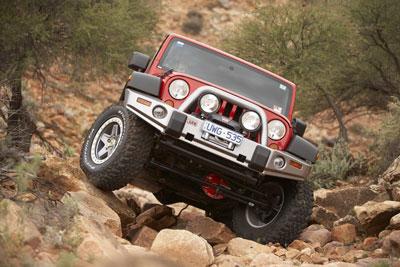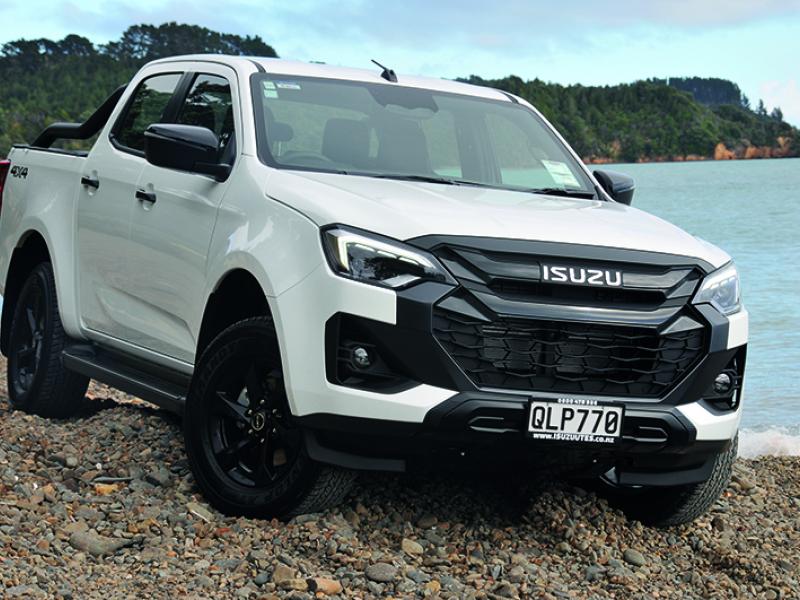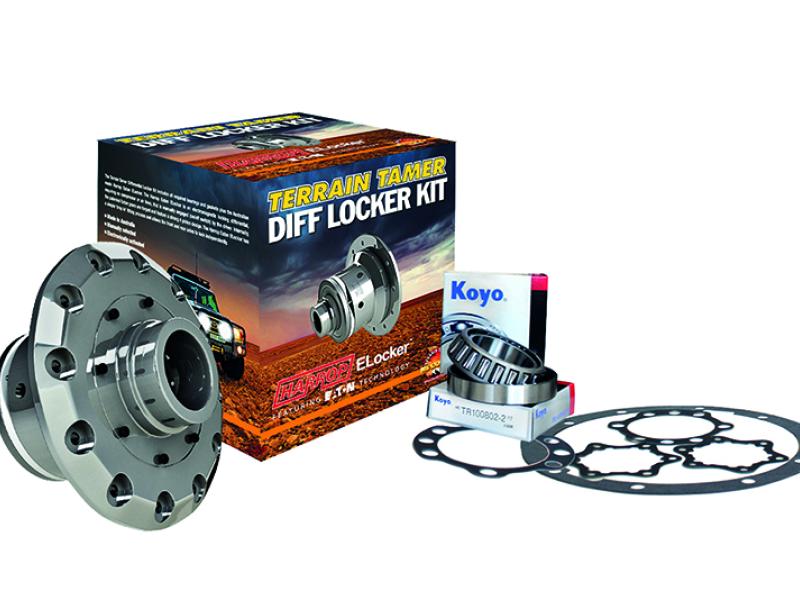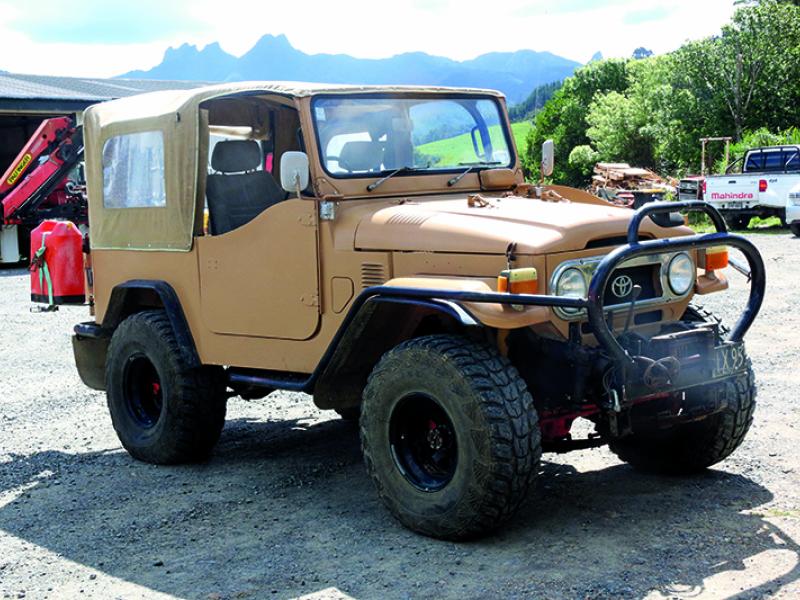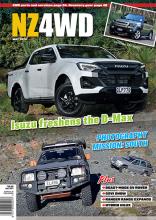What’s the biggest difference between a 4WD vehicle and either a front-wheel drive or rear-wheel drive? The answer is traction. Without traction you won’t be going anywhere, and the better the traction – that is, the factor that allows your 4WD to continue driving and gripping the road – the further you’re going to be able to go in your off-roading.
If you have good traction, there’s less strain on your 4WD. The better the traction, the safer it is, too, while the less you spin your wheels, the less chance there is of damaging the environment and carving dirty great ruts in our ever-diminishing legal off-road areas.
Ok, so we can see the advantages. Now how do we go about improving the traction on our shiny new (or maybe not-so-new) 4WD.
The answer is, a lot! These days we have an almost endless choice of mud tyres, suspension upgrades, and all manner of diff lockers. On top of that, there are the electronic traction control systems that come with most of the newer models – but since they’re standard, and you can’t add one if you don’t have it on your vehicle, we’ll leave that alone.
Tyres
So first, let’s take a look at tyres. This is probably the lowest-cost means of improving your 4WD’s traction. Most 4WDs from new come with highway biased tyres, although a few have a more aggressive all terrain (also known as town and country) construction and tread pattern.
These are fine if your 4WDing is confined to dirt roads or the beach, but as soon as you want to go further afield, well it’s best to have a look at your rubber.
Bigger and more aggressive tyre lugs give you better grip, so this would seem a good place to start.
For off-road applications, if you’ve got highway terrains (HT) your tyre choices really start with all-terrain (AT) tyres. For the majority of people who will do 70 percent on-road/gravel/sand and 30 percent mud, these will give acceptable road manners but better off-road traction than the HT tyre.
There are some ATs that have a slightly more aggressive pattern, and these are classified 60/40, meaning they’re slightly better suited for off-road work - but it’s best to check out on these with your tyre dealer.
However, if you’re really going to be spending a lot of time off-road, then it’s best to look at a set of mud-terrain (MT) tyres. These have an even more aggressive tyre pattern, and are available in most sizes – but there are lots of compromises concerned with fitting them on your vehicle, not least of which are increased tyre wear, more road noise, longer braking distances, and worse handling and roadholding. At a 20/80 ratio, these tyres are designed to work best in the back of beyond.
We must also note here that there are different regulations governing the use of these tyres, i.e. you may not mix MTs with any other type of tyre on your vehicle, and the minimum tread requirement is 4mm, not the 1.5mm of other tyres.
The reason MT tyres work so well off-road is that they have bigger blocks of tread, and more space between them. That means the tread can reach down into the mud or sand and get more grip – the downside is that on tar seal these bigger blocks squirm around and generate heat, and it is this that leads to the high wear rate.
But be selective in the type of MT tyres you’re using – highly aggressive competition tyres will work well, but they really aren't practical for day-to-day use – and they are expensive.
It also depends on the actual use you’re going to be putting your 4WD to. If you’re going to be mainly driving on the beach, an AT tyre is your best choice because the smoother tread pattern allows the tyre to ride up and over the sand “bow wave” that it creates in front of the tyre.
Mud tyres WILL work, but you have to deflate them lower than you would with ATs so that your 4WD isn't working overtime to keep you moving.
However, all this changes when you get to soil or mud, as AT tyres can clog in these conditions, and you’re tyre becomes about as effective as smooth one! But the MTs’ larger tread blocks create more points for the tyre to grip with – and they are almost “self-cleaning” if you occasionally give them a little spin (but do this when you’re out of the obstacle).
All that said, Warren Adams, of online 4WD parts and accessories retailer 4WDBits, points out that tyre technology is progressing at a very fast rate, and the last 18 months has seen several new tyre choices and treads to consider.
“Some of the newer off-road orientated tyres incorporate designs that provide on-road grip and road manners never before seen in these tyres, while improved tread durability combined with tread depths sometimes more than 16mm mean the tyres can last for a very high mileage before reaching legal minimum requirements,” he says.
Body lift
Giving your 4WD a body lift isn’t just about looking mean and nasty – it’s about getting the bodywork further away from the ground so that when you come to an obstacle you won’t “belly” the chassis.
Having good grip from your tyres is useless if you are sitting on your underbelly and all of the wheels are spinning in free air.
It also helps if you can improve the suspension by fitting better shock absorbers and springs. These will ensure your wheels stay in contact with the ground more often – definitely aiding traction – and there are a number of companies which supply ready-made kits to fit most vehicles.
And then there’s the lift itself. Again, ready-made kits are available, but we would recommend you read our article on off-road suspension and the associated regulations published in our August 2012 issue. You can also visit http://www.nzta.govt.nz/resources/virm-in-service-certification/virm-in-service-certification.html for more precise details.
However, if that’s all too much, the Low Volume Technical Association, which is in charge of compliance of vehicle modifications, summarises that the only change to the ride that’s allowed without compliance being needed is the use of blocks in leaf springs to raise the suspension by a maximum 50mm.
Changing the front and rear bumpers to give better approach and departure angles also helps.
Larger tyres will also give a small increase in ride height – so you’ll gain double by fitting those high profile MTs!
Locking diffs
Locking diffs are a popular addition to a 4WD as they definitely improve traction, usually when you need it most.
The most common lockers use air generated by a small on-board air compressor to engage them, though there are a number that engage automatically, while others are locked electro-mechanically by just pushing a switch.
Each has its own advantages and disadvantages, as we explained in our feature on this subject in our September 2012 magazine – in fact we’d recommend you have a look at this before you make your final choice. You can also read it online at https://nz4wd.co.nz/articles/gaining-traction.
The principal of locking the differential is to eliminate the wheelspin on a slipping wheel by locking the pair on an axle together so both rotate at the same speed, and you can find some grip.
Lockers make all-terrain tyres look impressive, as they compensate for when the suspension has reached the end of its travel, causing a wheel to lift, by sending the torque to the other wheel (which will be firmly on the ground).
They are proven and reliable, they work, yet they do have their drawbacks.
Since the axle is locked, the inner and outer wheels that need to rotate at different speeds during a turn can't, so this makes it extremely difficult to turn the vehicle – it will just want to go straight ahead.
Steering is affected whether it’s a front or rear locker.
ARB
One of the leading lights in the air-operated locking diff. arena is ARB, and for the past few years, ARB has been quietly moving from a three-piece Air Locker design to a stronger two-piece model with some heavy-hitting innovations inside.
Daniel Bongard, head of ARB’s Air Locker division, was hired in 2000 to design and implement improvements to a small number of Air Locker models that, while featuring all of the components that have made Air Lockers reliable, were found to underperform when compared to the rest of the locker range.
But redesigning these models proved difficult, as Bongard explains. “We found there was a delicate balance in regard to attaining optimal strength. When we increased the strength in one area of the locker, a different area or component was weakened. After four complete design options had been explored and dismissed, we knew it was time for something radical. So we put aside the existing Air Locker design and started from scratch.”
What followed was six months of computer-generated concepts involving an original two-piece design, new components and a unique “timed” gear set that showed exciting improvements in strength, durability and locking speed.
“We’re not talking about improvements in strength of three or four percent, which any engineer would be proud of,” Bongard says. “The lab results indicated a phenomenal 40 percent improvement in static torque strength compared to the equivalent three-piece design. It was huge.”
A further six months was then spent proving and refining the design. This meant destructive testing both in the lab and with prototypes fitted to vehicles driven through obstacle courses and across all types of terrain. “It was all about trying to break the prototypes and improving the design,” Bongard says. “But the two-piece Air Locker came out on top.”
In fact, the two-piece Air Locker was such a leap forward in strength, durability and locking speed that ARB immediately commenced a programme to implement the new design across the Air Locker range.
Of the 24-26 components required for each Air Locker, every metal-based piece is manufactured in-house except for the gears. These gears, while not made at ARB, arrive at the Melbourne plant as blanks.
The attraction of an ARB Air Locker lies in the fact that it is a replacement differential that gives the best of both worlds – a normal open differential for on-road use, and a positively locked differential for challenging off-road situations.
ARB Air Lockers use a 12V compressor that delivers high-pressure air to the differential centre, thereby engaging the locking mechanism. The ARB Air Locker is sold and supported throughout New Zealand. More info phone 0800 ARB 4WD (272 493) or go to www.arb4x4.co.nz.
4WD Fibreglass
However, ARB is not the only company using air operation for its locking diffs, and “Off-Road” branded air locking differentials have been available in New Zealand through 4WD Fibreglass for the past six years.
Says 4WD Fibregalss’s Steve Whitton: “We have supplied Off-Road lockers for many vehicle applications, such as trials, winch challenge, off-road racing, bush trucks, safari and recreational SUVs.
“We tested differential components in a university laboratory some years back, and results indicated a locker every bit as strong and durable as any OEM differential gears. Our quality control provides for a random selection of lockers to be dismantled, inspected and if necessary improved before sale.
“No lies – we do occasionally import defective units. If we can’t sort it, it goes into spares. If you find a problem, we will replace the problem.”
He says switched air activation provides easier and more convenient in-vehicle placement than cumbersome levers and cables. Fitting does not require bolting or welding attachments to the differential housing, and can be carried out by those with very experienced mechanical skills.
“We suggest Off-Road lockers be installed in both the front and rear differentials where more extreme 4wheeling is anticipated. The big plus is even torque distribution to all axle half shafts, and better tractability and safety on sidlings and slippery hill descents.
“Not that we recommend travel along any sidling, but when it is necessary to do so, when all four wheels turn there is less tendency for side-slip or roll-over due to the top side wheels not turning and loosing traction.
“The same applies traversing slippery downhill grades. All wheels turn at the same speed and when one wheel slips, there is no backwards wheel rotation and this equates to no rear sliding sideways or trying to overtake the front.”
4WD Fibreglass Off-Road lockers are available in stock for most models of Toyota, Nissan, Jeep, Land Rover, Suzuki and Mitsubishi, and can be installed by 4WD Fibreglass if required. Alternately, ship your carrier for 4WD Fibreglass to fit and return. More details 0274881101 or call at 136 Ellis Street, Hamilton.
Ironman
Ironman4x4 uses a different approach in its locking differentials, preferring electro-magnetic operation rather than compressed air to lock its Harrop/Eaton E-Locker.
The Ironman Diff Locker is manufactured in Australia in conjunction with Eaton Corporation and Harrop Engineering, and is maintenance free.
The initial range of Ironman Diff Lockers is designed to fit Toyota Land Cruiser, Prado, and Hilux, and Nissan Patrols.
The lockers feature a heavy duty four-pinion design, push-button operation, with no air system or plumbing required, 12V activation with patented electric locking, and where both front and rear lockers are installed, they can be activated individually.
Each comes with a 3-year warranty.
The Ironman locker is built with precision-forged gears by Eaton that are designed to mesh perfectly, providing strength and durability over a standard gear cut.
Ironman says its lockers have the following advantages over air lockers:
• No air lines required – this means no compressors needed, no air lines or damage to air lines, no chance of oil pumping up the air lines, no delay in engagement due to oil in air lines, no leaking diff seals due to having a pressurised diff, no solenoids, no air tank and no pressure switch required.
• Maintenance free – no servicing required, no seals to perish, no wearing seals on metal parts and no double lip seals that can break down.
• Less moving parts giving less risk of breakdown.
• State of the art electro magnetic engagement with no need for full-time pressure.
• Low power draw as no need to operate compressor.
• Easy to install, with complete kit, diff centre and wiring loom.
• Only require two switches in the dash for engagement.
Contact Ironman4x4 on 0508 IRONMAN for more info or visit www.ironman4x4.co.nz
4WDbits
External traction aids can often help when tyre traction fails by adding traction or bridging obstacles. 4WDbits, which is is New Zealand’s leading online retailer of affordable quality 4WD parts and accessories, covers the range of traction aids with TRED (Total Recovery and Extraction Device), Maxtrax and Sand Matts.
TREDs are 800mm long, feature extreme grip nodules for maximum tyre grip, and weigh a little over 2kg each. They can be used to span obstacles, ramp to or from obstacles, and add traction in sand or mud.
Maxtrax is similar but larger and heavier, and works well in sand and mud. Sand Matts are unrolled across slippery or soft ground to give additional traction.
Visit 4WDbits for more information, or to see its full range of tyres and 4WD bits. www.4wdbits.co.nz


